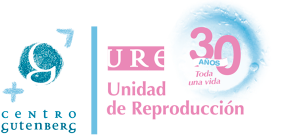Can we prevent infertility? Dr. Claudio Álvarez offers some clues

As specialists in reproduction and infertility, every day at our fertility clinic in Spain we find ourselves in situations with patients in which we feel like we’ve arrived too late. Unfortunately, we do not always have the tools to make all couples’ dreams of becoming parents come true. We know that if we had guided them and informed them in time, then we wouldn’t now be making decisions about diagnoses or treatments that oftentimes cause a state of shock, anxiety and distress, making the ultimate decision difficult to make.
We live in a time in which parenthood is one of our mid to long‑term goals. However, we are not aware of the reality of the reproductive functions, nor the prognosis of our specie’s fertility. It is becoming increasingly common to wait longer to have a first child. Did you know that in the 1970s couples had their first child when the female was 25.2 years old, on average, and forty years later we are waiting until we are over the age of 30?
The decision to delay motherhood must be an informed decision
Motherhood is important for the majority of women, and most hope to have two or three children, the last one after the age of 35. Being in a stable relationship, building a career and having financial security are some of the requirements before considering parenthood.
The majority of couples underestimate the impact of the female’s age on fertility and, at the same time, overestimate the results of assisted reproduction techniques. As a result, these couples are at risk for putting off parenthood until later on. The decision to delay motherhood is made freely, but it must be an informed decision one makes after taking into consideration all of the possible implications.
The impact of the female’s age on fertility
At our fertility clinic in Spain we tell our patients this every day, as we will never tire of saying it: the female’s age is the most important factor in terms of conception. Pregnancy rates are fairly stable at around 23% per month until the age of 30, and then this rate begins to decline significantly starting at the age of 37, resulting in an increased number of infertile women.
It is important that our patients understand that when their family doctor or gynaecologist tells them that everything looks good at their annual check‑up, this doesn’t necessarily mean that everything is OK reproduction‑wise. In other words, a woman who is 43 or 45 years old may be in perfect health and her annual gynaecology visits might look fine, but her likelihood of receiving a poor prognosis in terms of her reproductive health will be extremely high due to her age.
A new concept of “infertility prevention”
The response to all of the above should be a new concept of “infertility prevention”, where the responsibility falls on health professionals, healthcare workers in general and on society as a whole. We must be aware of the necessity to reinforce this new concept and gain a better understanding of the factors that have an impact on female fertility such as age, as well as the new possibilities for preserving fertility (vitrification of oocytes, freezing of ovarian tissue and freezing of sperm).
In summary, at URE Centro Gutenberg we believe that all couples have the right to make decisions freely, though it should be an informed decision they make by taking into account the possible implications of delaying parenthood, one of the emerging issues of our time.

